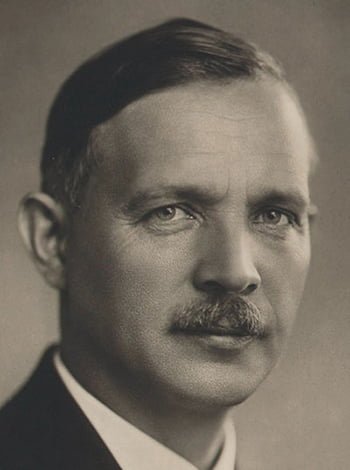Lewi Petrus,
1884-1974

Lewi Petrus
Lewi Petrus was born in Sweden and was the son of a factory worker. He grew up in the Baptist Church when there were many groups gathering in homes to pray for revival. He became an evangelist (1902-04) and attended Bethel Seminary in Stockholm (1905-06). Petrus experienced a powerful inward cleansing in 1905 and, after reading a books by A. J. Gordon and Charles Finney, he began to yearn for the Baptism in the Holy Spirit.
Lewi Petrus tells his own story
In answer to prayer, the Spirit of God began to move, especially among the Baptists. We cannot do better than to let Pastor Lewi Petrus, tell his own story:
“I had a wonderful experience in the year 1905„ The Lord cleansed my heart and then I had a great desire to be filled with God. The biography of Charles Finney showed me that there was a blessing I could receive. I read a book by Dr. A. J. Gordon, which told of-being filled with the Spirit, and I began to long for the Baptism of the Spirit.
No one ever preached on the Baptism of the Spirit at that time, and I had never seen anyone receive the fullness of the Spirit, but I understood there must be something in it. I was holding revival meetings and a few souls, from ten to twenty, were coming to the cross in the meetings; but when I saw them coming, weeping, I also saw the emptiness of my own soul and heart.
I got away from the revival meetings, threw myself on the floor in my room, and cried to God that He might fill me. I felt I was empty; I was clean, but I was not filled. Why do I speak of myself ? Because this was the first experience of thousands of others at the same time. There were thousands of others with the same experience, crying to God, ‘Give us a revival and fill us with the Holy Spirit.’
“In January, 1907, I picked up a Stockholm paper and saw the picture of a man I knew very well, Pastor Barratt of Christiania, Norway. The heading of this article was, ‘A remarkable revival has broken out in Christiania. People are talking in tongues, just as on the Day of Pentecost.’ I said to my helper, ‘I am going to Christiania tomorrow.’
When I was leaving the church, they told me that I was welcome back again, but I answered, ‘I will never come back again unless the Lord baptizes me with the Holy Spirit.’ I am not going to describe how it happened, but praise God it did happen, and a little later on there were thousands and thousands baptized in the Spirit in Sweden.
“About that time, a young man came back to his old home town in Sweden from the States. Nobody understood him, but reports were circulated that he spoke in tongues.
One day, while he was in a Baptist prayer meeting, he spoke in tongues and there was a great upheaval. But the work of the Lord continued, especially among the Baptists. A very spiritual, prominent man had been in the Baptist denomination about fifteen years and had taught the people about being filled with the Holy Spirit.
He had never seen anyone receive the Baptism of the Spirit and speak in tongues, but he believed in the Spirit-filled life, and his teaching penetrated the Baptist denomination quite a bit, and I believe that is why the Spirit of God fell among the Baptists. There was an open door, many of the people understanding something of this work.
In his own words, ‘There were thousands of others (in Sweden) at the same time crying to God, ‘Give us revival and fill us with the Holy Spirit.’” In January 1907 he read in a Stockholm newspaper of T. B. Barratt who was experiencing Pentecostal tongues in Norway. When this young zealot arrived in Oslo with such intense earnestness he soon received what he was looking for and became a Pentecostal Christian by experience.
Lewi Petrus becomes Pastor of Filadelfia
At the time he was pastor of the Baptist Church in Lidkoping (1906-11) and his entire congregation also accepted the Pentecostal message, as did numerous other churches in Sweden. On August 30th 1910, a new Baptist Church, Filadelfia in Stockholm, was formed, allowing the full freedom of the Holy Spirit in its meetings.
On January 11th 1911 Petrus was called to be its Pastor, but in April 1913 the Swedish Baptist Convention expelled Petrus and his new congregation from the convention. The reason stated was their ‘open communion’ policy, but the real issue was their Pentecostal doctrine and practice. Nevertheless, Petrus always respected his Baptist heritage, even employing a Baptist ecclesiology as the basis for the newly founded Pentecostal denomination.
God’s blessing was upon Petrus and thousands joined his church’s ranks in the home church in Stockholm and across the nation. When he took on the pastorate of Filadelphia the membership was abot 70 but within a year it reached 244. The next year it rose to 438 and by 1918 it stood at 1,411. By 1926 it was 3,176 and by 1938 it reached a colossal 5, 887.
His great features
What were his outstanding features? He had a charming but simplicity in his style and a rare graciousness of spirit, but his great organising ability is beyond question. His sharp mind and strong leadership style gave a solid backbone to the Pentecostal movement throughout Scandinavia.
‘Petrus led his own congregation to become the largest in the Pentecostal world (until c. 1975) and the Pentecostal movement in Sweden to become the largest Free Church in Sweden, primarily by his ability to relate the church to all aspects of life. His holistic vision for the Christian life and the moderation, dignity, and realism of his expectations of spiritual development won him a hearing throughout Europe, North America, and the Third World.
He demonstrated to the Pentecostal world that the movement did not have to be alienated from the national culture of which it is a part.’ He was clearly seen as a Pentecostal statesman, not only in his own nation but also across the world.
He remained pastor at Filadelphia, Stockholm, until his retirement in 1958 and active in the movement until his death in 1974.
His enterprises
He also founded the Filadelia Church Rescue Mission (1911); the Filadelfia Publishing House (1912); the Filadelfia Bible School (1915); the periodical Evangelii Harold (1916); the Kaggeholms Folkhogskola (a secondary school) (1942); a national daily newspaper, Dagen (1945 ); a savings bank, Allmanna Spar-och Kreditkassen (1952); and a worldwide radio network, I.B.R.A. Radio (1955).
His writing ministry
Petrus was also a prolific author. His first book, Jesus Kommer (1912) was also the first publication of the Forlaget Filadelfia (Filadelfia Publishing House). His collected writings comprise ten volumes, not counting his five-volume memoirs and a number of books written after 1956. He also contributed widely to periodical publications. His books and essays have been translated into many languages.
Bibliography: Donald Gee, ‘Wind and Flame’ 1941 and 1967; D.D. Bundy art. ‘International Dictionary of Pentecostal and Charismatic Movements’ 2002.
Tony Cauchi
For further research
Lewi Petrus – Wikipedia
Lewi Pethrus’ Ecclesiological Thought – a 337 page paper on his ecclesiology.


